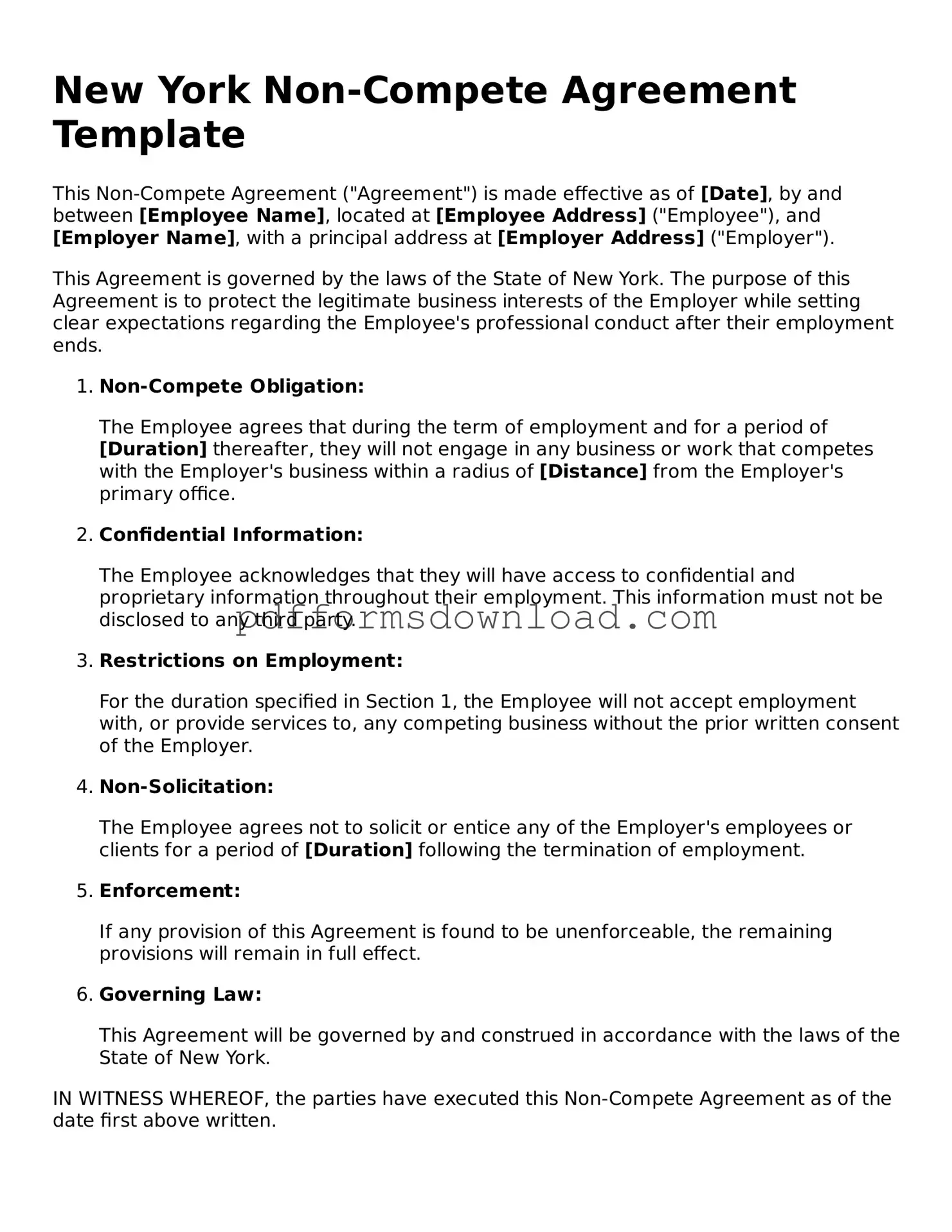What is a non-compete agreement in New York?
A non-compete agreement is a contract between an employer and an employee that restricts the employee from working for competitors or starting a competing business for a certain period after leaving the company. In New York, these agreements must be reasonable in scope, duration, and geographic area to be enforceable. The purpose is to protect the employer's legitimate business interests, such as trade secrets and customer relationships.
Are non-compete agreements enforceable in New York?
Yes, non-compete agreements can be enforceable in New York, but they are subject to strict scrutiny. Courts will consider factors such as the necessity of the agreement for protecting the employer's interests, the reasonableness of the time and geographic restrictions, and whether the agreement imposes an undue hardship on the employee. If the terms are deemed excessive or overly broad, a court may refuse to enforce the agreement.
What should I consider before signing a non-compete agreement?
Before signing a non-compete agreement, it’s essential to carefully review the terms. Consider the duration of the restrictions and the geographic area covered. Evaluate how the agreement may impact your future employment opportunities. It may also be beneficial to consult with a legal professional to understand your rights and any potential consequences. Negotiating terms that are fair and reasonable can also be a wise step.
Can I negotiate the terms of a non-compete agreement?
Yes, negotiating the terms of a non-compete agreement is not only possible but often advisable. If you feel that certain aspects of the agreement are too restrictive, you can discuss your concerns with your employer. Many employers are open to adjustments, especially if you can present a compelling case for why the changes are necessary. A mutually agreeable agreement can benefit both parties by fostering a positive working relationship.
